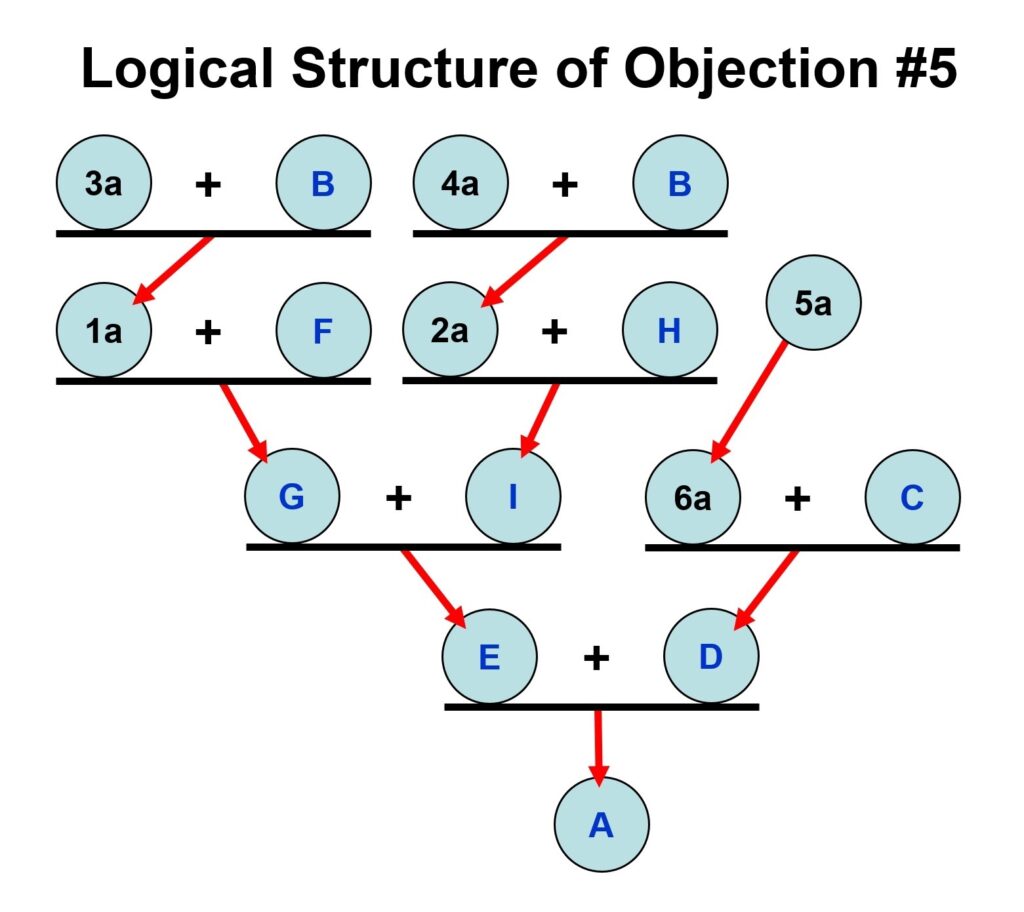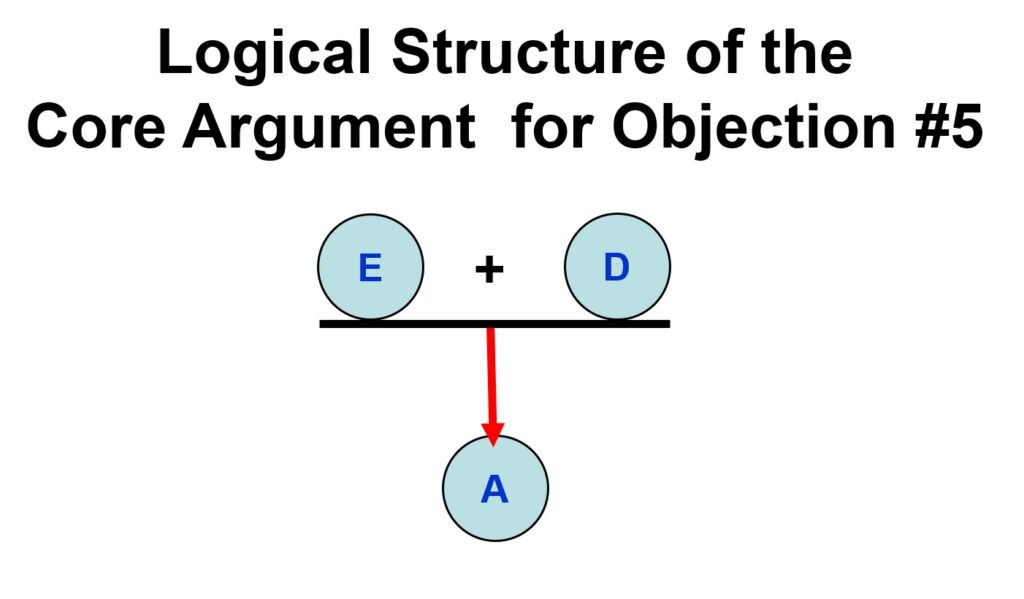Kreeft’s Case Against the Swoon Theory – Part 14: A Careful Analysis of Objection #5
OBJECTION #5: THE SICKLY JESUS OBJECTION
Here is the fifth objection by Peter Kreeft and Ronald Tacelli against the Swoon Theory:
The post-resurrection appearances convinced the disciples, even “doubting Thomas,” that Jesus was gloriously alive (Jn 20:19-29). It is psychologically impossible for the disciples to have been so transformed and confident if Jesus had merely struggled out of a swoon, badly in need of a doctor. A half-dead, staggering sick man who has just had a narrow escape is not worshiped fearlessly as divine lord and conqueror of death.
(HCA, p. 183)
Kreeft and Tacelli say more about the alleged transformation of Jesus’ disciples when they discuss the Conspiracy Theory:
…Their [Jesus’ disciples’] sincerity is proved by their words and deeds. They preached a resurrected Christ and they lived a resurrected Christ. They willingly died for their “conspiracy.” Nothing proves sincerity like martyrdom.
The change in their lives from fear to faith, despair to confidence, confusion to certitude, runaway cowardice to steadfast boldness under threat and persecution, not only proves their sincerity but testifies to some powerful cause of it. Can a lie cause such a transformation?
(HCA, p. 185)
They [Jesus’ disciples] were hated, scorned, persecuted, excommunicated, imprisoned, tortured, exiled, crucified, boiled alive, roasted, beheaded, disemboweled and fed to lions…
(HCA, p. 186)
…the remarkable turnaround of the apostles from confused cowards to world-changing martyrs…
(HCA, p.197)
A CAREFUL ANALYSIS OF OBJECTION #5
After following my own process of careful argument analysis, I produced an argument diagram of this objection that includes six explicit claims, and nine assumed or unstated claims, arranged in eight inferences or sub-arguments:

THE STATED PREMISES OF OBJECTION #5
1a. On the weekend after Jesus had been crucified, ten of the eleven remaining disciples of Jesus (not including Thomas) each had an experience that the disciples believed was an experience of seeing a living and physically embodied Jesus, and this convinced those ten disciples that God had raised Jesus from the dead and given Jesus an immortal body.
2a. On the second weekend after Jesus had been crucified, Jesus’ disciple Thomas had an experience that Thomas believed was an experience of seeing a living and physically embodied Jesus, and this convinced Thomas that God had raised Jesus from the dead and given Jesus an immortal body.
3a. According to the Gospel of John (Jn 20:19-29), on the weekend after Jesus had been crucified, ten of the eleven remaining disciples of Jesus (not including Thomas) each had an experience that the disciples believed was an experience of seeing a living and physically embodied Jesus, and this convinced those ten disciples that God had raised Jesus from the dead and given Jesus an immortal body.
4a. According to the Gospel of John (Jn 20:19-29), on the second weekend after Jesus had been crucified, Jesus’ disciple Thomas had an experience that Thomas believed was an experience of seeing a living and physically embodied Jesus, and this convinced Thomas that God had raised Jesus from the dead and given Jesus an immortal body.
5a. IF sometime after Jesus had been crucified, the eleven remaining disciples of Jesus each had experiences that they believed were experiences of seeing a living and physically embodied Jesus in which Jesus appeared to be a half-dead, staggering sick man who was badly in need of a doctor, THEN it would have been psychologically impossible for the eleven remaining disciples of Jesus to have been transformed (sometime after Jesus had been crucified) by experiences that they believed were experiences of seeing a living and embodied Jesus, changing them from fearful doubting cowards into brave and confident believers in Jesus as the divine lord and as the resurrected conqueror of death and into men who boldly preached the resurrection of Jesus.
6a. IF sometime after Jesus had been crucified, the eleven remaining disciples of Jesus each had experiences that they believed were experiences of seeing a living and physically embodied Jesus in which Jesus appeared to be a half-dead, staggering sick man who was badly in need of a doctor, THEN the eleven remaining disciples of Jesus would NOT have been transformed (sometime after Jesus had been crucified) by experiences that they believed were experiences of seeing a living and embodied Jesus, changing them from fearful doubting cowards into brave and confident believers in Jesus as the divine lord and as the resurrected conqueror of death and into men who boldly preached the resurrection of Jesus.
THE UNSTATED ASSUMPTIONS/PREMISES OF OBJECTION #5
A. The Swoon Theory is FALSE.
B. The Gospel of John provides a reliable and accurate account of the life of Jesus, including alleged experiences of the risen Jesus had by the eleven remaining disciples of Jesus after Jesus’ crucifixion.
C. The eleven remaining disciples of Jesus were transformed (sometime after Jesus had been crucified) by experiences that they believed were experiences of seeing a living and embodied Jesus, changing them from fearful doubting cowards into brave and confident believers in Jesus as the divine lord and as the resurrected conqueror of death, and into men who boldly preached the resurrection of Jesus.
D. It is NOT the case that sometime after Jesus had been crucified, the eleven remaining disciples each had experiences that they believed were experiences of seeing a living and physically embodied Jesus in which Jesus appeared to be a half-dead, staggering sick man who was badly in need of a doctor.
E. IF the Swoon Theory is true, THEN sometime after Jesus had been crucified, the eleven remaining disciples each had experiences that they believed were experiences of seeing a living and physically embodied Jesus in which Jesus appeared to those disciples to be a half-dead, staggering sick man who was badly in need of a doctor.
F. IF the Swoon Theory is true and on the weekend after Jesus had been crucified, ten of the eleven remaining disciples of Jesus (not including Thomas) each had an experience that the disciples believed was an experience of seeing a living and physically embodied Jesus, THEN on the weekend after Jesus had been crucified, ten of the eleven remaining disciples of Jesus (not including Thomas) each had an experience that the disciples believed was an experience of seeing a living and physically embodied Jesus in which Jesus appeared to those ten disciples to be a half-dead, staggering sick man who was badly in need of a doctor.
G. IF the Swoon Theory is true, THEN on the weekend after Jesus had been crucified, ten of the eleven remaining disciples of Jesus (not including Thomas) each had an experience that the disciples believed was an experience of seeing a living and physically embodied Jesus in which Jesus appeared to those ten disciples to be a half-dead, staggering sick man who was badly in need of a doctor.
H. IF the Swoon Theory is true and on the second weekend after Jesus had been crucified, Jesus’ disciple Thomas had an experience that Thomas believed was an experience of seeing a living and physically embodied Jesus, THEN on the second weekend after Jesus had been crucified, Jesus’ disciple Thomas had an experience that Thomas believed was an experience of seeing a living and physically embodied Jesus in which Jesus appeared to Thomas to be a half-dead, staggering sick man who was badly in need of a doctor.
I. IF the Swoon Theory is true, THEN on the second weekend after Jesus had been crucified, Jesus’ disciple Thomas had an experience that Thomas believed was an experience of seeing a living and physically embodied Jesus in which Jesus appeared to Thomas to be a half-dead, staggering sick man who was badly in need of a doctor.
THE CORE ARGUMENT OF OBJECTION #5
The final inference in the argument for Objection #5 is the core argument for this objection:

E. IF the Swoon Theory is true, THEN sometime after Jesus had been crucified, the eleven remaining disciples each had experiences that they believed were experiences of seeing a living and physically embodied Jesus in which Jesus appeared to those disciples to be a half-dead, staggering sick man who was badly in need of a doctor.
D. It is NOT the case that sometime after Jesus had been crucified, the eleven remaining disciples each had experiences that they believed were experiences of seeing a living and physically embodied Jesus in which Jesus appeared to be a half-dead, staggering sick man who was badly in need of a doctor.
THEREFORE:
A. The Swoon Theory is FALSE.
The rest of the argument consists of a complex argument in support of the key premise (E), and another less complex argument in support of the key premise (D).



